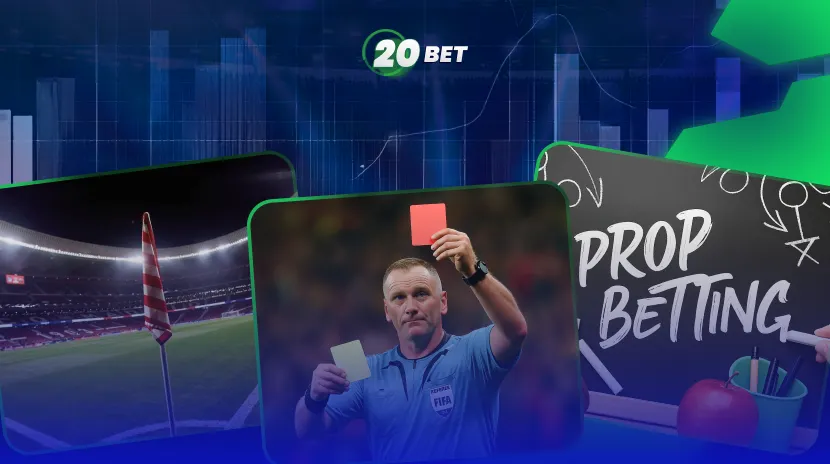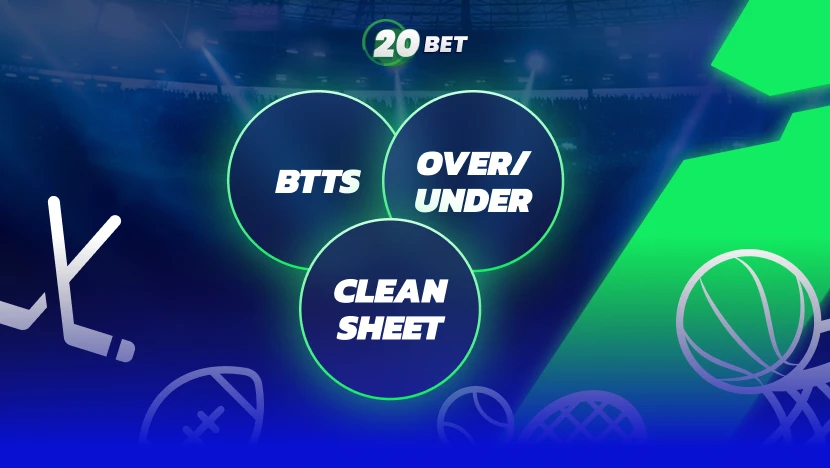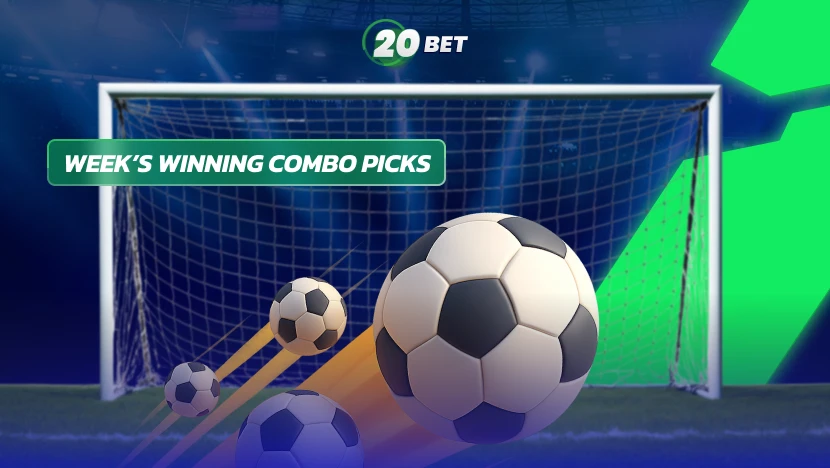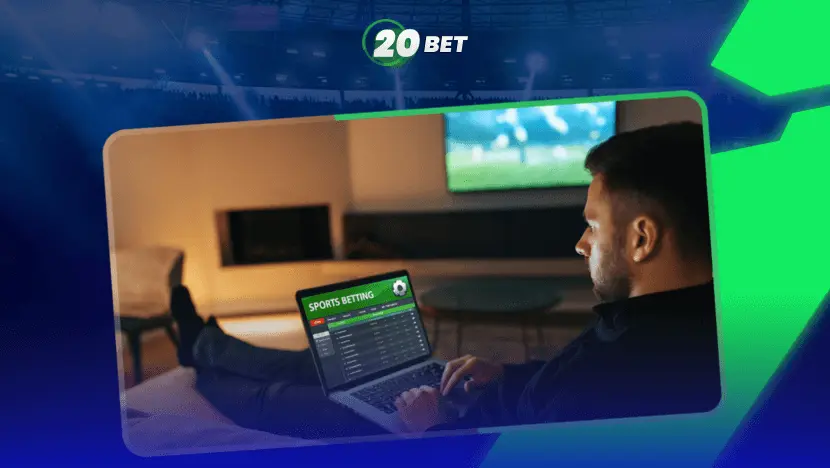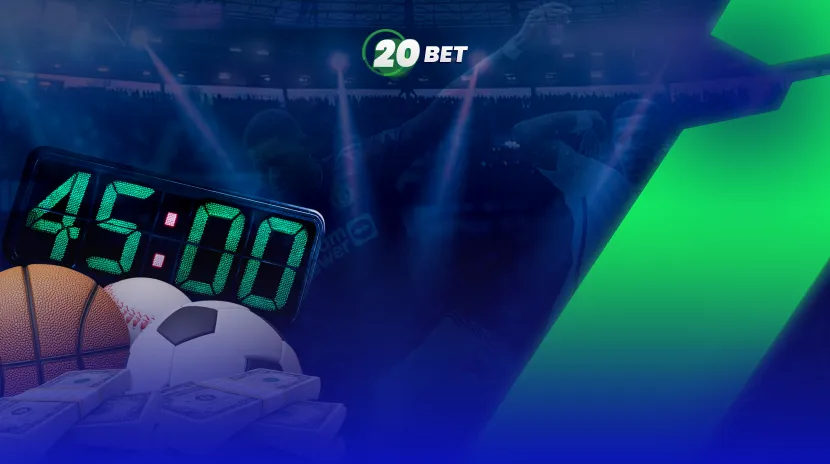Most people bet on winners and totals, where the prices are tight. However, the easier edges sit in smaller markets that move more slowly, such as corners, cards, and props.
This guide walks through a simple way to work these on 20Bet. Make sure to check your book’s rules before you stake, as settlement for corners, cards, Asian lines, and multi-corners can differ by market.
What These Markets Really Price In
Corners reflect field tilt and crossing volume. Cards reflect discipline, pressure, and how strict the referee is on the night. Props cover single events, such as shots, assists, tackles, or goal scorers.
Why These Markets Attract Professional Bettors
Before we get into tactics, here is why sharper players like these spots:
- Pricing gaps: Mainlines like moneyline or totals are efficient, while niche markets can lag.
- Clear drivers: Tempo, possession, formations, and game state shift corners. Rivalries, referee tendencies, and intensity shift cards. Player role and usage drive props.
- Model-friendly: These markets map well to simple metrics, which can then feed forecasting models and simulations.
Corner Bets: Strategy and Value
Corner markets react to tempo and territory — factors that are easier to project than exact scores. However, keep in mind that rules vary by book, so always check how corners are settled before betting.
Common Corner Bet Types in Soccer Betting
Use the map below to read the menu you’ll see on 20Bet and most books:
| Market | What settles it | Typical listing | Notes |
| Match total corners Over/Under | Total corners at full time | Over/Under 9.5 | Extra time usually excluded — check house rules. |
| Team corners Over/Under | One team’s corners | Team A Over 5.5 | Useful when favorites pin the opponents deep. |
| First corner | First team awarded a corner | Team A First Corner | Priced around aggressive starts and wing play. |
| Asian corners | Handicap or O/U with half stakes on edges | Over 10, Over 10.5 | Push/half-loss mechanics reduce variance. |
| Multi-corners betting | first-half corners × second-half corners | 25+, 28+, 30+ | Defined as first-half total multiplied by second-half total. |
Factors Experts Consider: Tempo, Styles, Possession
Build a pre-match view from simple inputs:
- Tempo and possession: High-press sides create territorial pressure and more corners. FBref provides team corner counts and set-piece splits by league for quick baselines.
- Formations and tactics: a 4-3-3 with high wingers tends to increase crosses. Crossing volume also rises for trailing teams due to game-state effects.
- Match context: Heavy favorites generate more box entries, while underdogs that sit low concede corners yet can flip late if chasing.
- Variance: Corners are bursty, so expect volatility and streaks. Price with ranges, not single-point guesses.
Corner betting tips: Map each team’s tactics, likely possession share, and tempo into a quick expected-corners range, then shop the line. Use live data to upgrade the read rather than forcing pre-match positions.
Card Bets: Reading Discipline Trends
Card markets price aggression, discipline, and officiating. The Laws of the Game define yellow as a caution and red as a sending-off. Only players and team officials can be shown cards.
Types of Card Bets
Start from the market that fits the story you expect — it makes staking easier:
- Card totals: Match over/under, e.g, Under 5 or Over 4.5.
- Team cards: One team’s bookings are valuable with sides that rely on transition fouls.
- Player to be booked: Start with role and opponent shape. Full-backs defending in space get dragged into recovery runs and cynical stops, which leads to more cautions.
- Red card in a match: A binary market with long odds. Keep stakes smaller.
- Time-split cards: First-half bookings or first card are good for fast-boiling derbies.
Influencing Factors: Referee History, Rivalry Intensity, Match Context
Check these three buckets before you click:
- Referee: Past averages, how quickly the first yellow arrives, and advantage usage. Big crowds can also sway decisions.
- Rivalry and stakes: Derbies and knockouts raise conflict and risk.
- Game state: Late time, tactical fouls, and teams chasing equalizers push cards higher.
What Is a Prop Bet?
A prop bet, or proposition bet, is a wager on a specific event that doesn’t directly decide the game’s outcome. Examples include player shots, assists, tackles, or goal-scorer props.
Popular Props
Use this as a starting list and pick props that match the role and the opponent.
- Player to score or assist: Driven by usage, set-piece duties, and penalties.
- Shots and shots on target: Role, positioning, and expected minutes matter.
- Game props: Total offsides, throw-ins, or even distance covered, where available.
- Team props: First to five corners, race to seven, or possession thresholds.
How Pros Leverage Data and Match Insights to Identify Value
Keep the workflow short so you can repeat it across a slate.
- Start with role and minutes: Who takes set-pieces, who gets subbed early, who stays on past the 80th minute, etc.
- Convert to a forecast: Turn usage into expected outcomes and simulate a few scenarios to capture variance.
- Validate the read: Check recent tempo, opponent pressure, set-piece share, and penalty duty before you stake.
Prop Bet Cheat Sheet
Use this as a sports action props checklist before placing bets or building a prop bet cheat sheet for a slate.
| Prop type | Primary levers | Common pitfalls |
| Anytime goal scorer | Role, penalties, xG per 90 minutes | Minutes risk from early substitutions |
| Shots/shots on target | Usage, opponent block rate | Leading teams often take fewer shots once ahead. |
| Assists | Set-piece taker, passing network | Low base rate, high variance |
| Tackles/clearances | Opponent style, field tilt | Booking risk alters playing time |
Live Betting Dynamics for Corners, Cards, and Props
Live markets move quickly, as momentum and substitutions change everything within minutes. Substitutes often raise intensity and can lift team output, which affects corner and foul rates.
How In-Play Dynamics Shift Strategies
The patterns below show up every week. Prepare entries for each one.
- Early goal: The leader slows tempo, while the trailer pushes wide and crosses more. Corners skew to the chasing side.
- Late pressure: When favorites trail, they push forward with extra crosses and shots, which raises multi-corner totals.
- Rivalry flashpoints: A cluster of heavy tackles lifts card risk. Time-split card lines can be the cleaner entry.
The Importance of Quick Reactions and Real-Time Model Adjustments
Keep a simple live sheet and update models with game state, key danger areas, and substitutions. If the pre-match view no longer fits, hedge the position or move to smaller markets like “next 10 minutes corners” instead of sticking with full-time totals.
Tools, Resources, and Pro Insights
Start with public data to build a baseline, then add videos and your own notes for context. Keep everything simple: the goal is a quick read you can update on matchday.
Models and Historical Data
- Begin with league and team pages on FBref to pull corners and set-piece counts. This can give you a fast starting range.
- Add simple game-state rules to see how an early goal or a red card changes tempo and shot selection.
- For corner patterns, remember that goals from corners are rare, yet volume and delivery quality still matter.
- Turn those inputs into a small model that outputs a range, not a single number.
Platforms and Resources Commonly Used by Pros
Keep a short list you can check quickly around team news:
- Stats and officials: FBref for quick tables and league sites for referee assignments and officiating notes.
- Research: Analytics blogs and academic papers on game state and referee bias to refine assumptions about psychology and precision.
- House rules: Open your book’s soccer rules page once per market type. Confirm how corners and cards grade, how Asian lines settle, and how multi-corners are defined.
Rules change over time. For example, time-wasting trials and other officiating tweaks have been tested in recent seasons. Following updates from the International Football Association Board (IFAB) and reputable outlets helps keep your assumptions current.
Responsible Gambling
Gambling always carries risk, so treat it like entertainment and set limits you can afford. Keep a budget, log your results, and accept that variance is part of the game.
In Canada, free confidential help is available nationwide through Canada’s Problem Gambling Helpline (1-888-230-3505), which connects you to local services. In Ontario, ConnexOntario and iGaming Ontario both offer region-specific player support and resources.
In the United States, the National Problem Gambling Helpline is available 24/7 at 1-800-GAMBLER. For mental health emergencies, dial 988.
For 20Bet account issues, use Live Chat on the site or email [email protected] for general queries and [email protected] for escalations. Response times can vary, and phone support isn’t available.
FAQ
What edge do professionals have in niche markets like corners and props?

